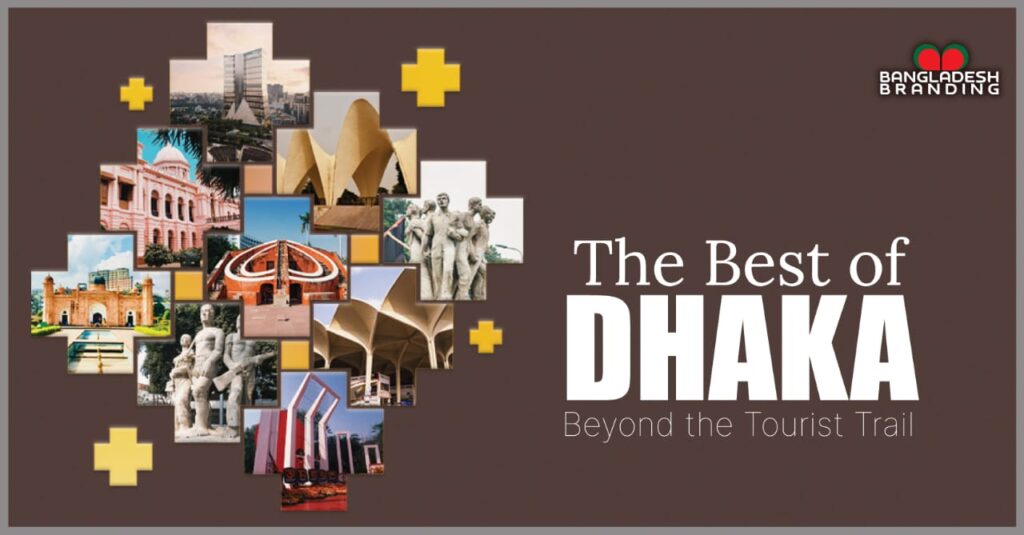Bangladesh’s energetic capital, Dhaka, provides a singular fusion of contemporary culture, historic sites, and busy city life. From historical landmarks to bustling bazaars, there’s something for everyone in this dynamic city. This guide will give you a sense of the city’s rich history, cultural attractions, and scenic beauty through a tour of the top must-see locations in Dhaka.The following ten off-the-beaten-path activities will provide you with a more genuine and immersive taste of Dhaka:
Bangladesh National Zoo
The Bangladesh National Zoo, sometimes referred to as the Dhaka Zoo, is a well-liked tourist destination situated in Dhaka’s Mirpur. The zoo has a large variety of animals, such as birds, reptiles, elephants, tigers, lions, and monkeys. The zoo has an extensive collection of plant species in its botanical garden. The zoo takes part in several conservation programs, including breeding programs for endangered species like Royal Bengal tigers and Asian elephants.
What To Expect?
The zoo offers a number of amenities for guests, such as a food court, a souvenir shop, and a playground for kids.
Tips
- The Bangladesh National Zoo hosts several events throughout the year, including educational programs, animal shows, and cultural festivals.
Hatirjheel
Hatirjheel’s construction started in 2007 and was finished in 2013. The city’s numerous canals and water features were connected to form the lake. Waterlogging in the city has decreased as a result of Hatirjheel’s construction, and the surrounding area has become better.
What to Expect?
Around the lake, Hatirjheel is a well-liked recreation area in Dhaka that features a number of parks, bike routes, and walking trails. To explore the lake, visitors can rent kayaks, boats, and bicycles.
Tips
- At night, Hatirjheel is adorned with vibrant LED lights, resulting in a stunning and captivating ambiance.Around the lake are a number of eateries and cafes that provide a selection of food and drinks.
Ramna Park
Ramna Park was originally a Mughal-era garden, but it was redesigned and renamed during the British colonial period in the 19th century. The park is well-known for its wide variety of trees, which include several varieties of banyan, mango, and palm trees. Throughout the year, Ramna Park holds a number of events, such as outdoor film screenings, concerts, and cultural festivals.
What To Expect?
The park offers a variety of amenities for visitors, such as kid-friendly playgrounds, bike routes, and walking trails. The park is also filled with a number of picnic tables and benches.
Tips
- Visitors are advised to wear comfortable shoes and clothing and bring plenty of water and sunscreen.
Khan Mohammad Masjid
Khan Muhammad Mridha, an affluent landlord and merchant who rose to prominence in Dhaka during the Mughal era, constructed the mosque in the early 1700s. The mosque is situated in the center of Old Dhaka, close to a number of other important historical sites, such as Ahsan Manzil and Lalbagh Fort.
What to expect?
A well-liked tourist destination for those interested in learning more about Bangladesh’s history and culture is Khan Mohammad Masjid, a prominent religious and cultural landmark.
Tips
- Visitors are required to dress modestly and remove their shoes before entering the mosque.
- For those interested in learning more about the history and architecture of the mosque, guided tours are offered.
Armenian Church
The Armenian Church, also known as the Armenian Apostolic Church of the Holy Resurrection, is a historic church located in the Armanitola area of Old Dhaka, Bangladesh. The Church was built in 1781 by Armenian merchants who had settled in Dhaka. It’s among Bangladesh’s oldest churches.
What To Expect?
For the Armenian community in Bangladesh, the Armenian Church is a significant place of worship. Religious ceremonies and regular worship services are still held in the church.
Tips
- Visitors are advised to dress modestly and remove their shoes before entering the church. The church is open to visitors on most days of the week, but it is best to check the opening hours before visiting.
Baitul Mukarram National Mosque
The construction of the mosque began in 1960 and was completed in 1968. The mosque was designed by the Pakistani architect, T Abdul Hussain Thariani. One of the biggest mosques in South Asia, it is modeled after the Kaaba in Mecca. The mosque is among the biggest in the world, with space for up to 40,000 worshipers at a time.
What To Expect?
The mosque offers a number of amenities for worshippers, such as a library, an Islamic cultural center, and separate prayer spaces for men and women.
Tips
- The mosque is a significant religious and cultural hub in Bangladesh. It organizes a number of annual events, such as cultural programs, Islamic lectures and seminars, and prayers for Eid al-Fitr and Eid al-Adha.
Central Shaheed Minar
Central Shaheed Minar is a national monument located in Dhaka. The monument was erected in honor of the victims of the 1952 language movement, which was a turning point in the history of the nation. The language movement was a protest against the Pakistani government’s decision to make Urdu the only official language in East Pakistan (now Bangladesh). On February 21, 1952, students and activists organized a peaceful demonstration in Dhaka, demanding that Bangla be given equal status as a national language. Numerous protesters were killed when the police opened fire on them, inciting more unrest and protests.
What To Expect?
The Shaheed Minar was built in memory of the martyrs of the language movement. The monument is a tall, white building with many pillars and arches. It is a well-liked location for both locals and tourists, situated close to the Dhaka Medical College Hospital in the city’s center.
Tips
- The Central Shaheed Minar is a symbol of the Bengali Language Movement and is held in high regard by the people of Bangladesh. It’s critical to show reverence for the monument and abstain from any actions that might be interpreted as disrespectful.
Tara Masjid
The mosque’s name is derived from its stunning decoration of star-shaped motifs on its walls, ceilings, and domes, which are made with tiny pieces of tiles. The mosque was originally built as a small, single-domed structure by Mirza Ghulam Pir, a local landlord. Later in the early 20th century, the mosque was renovated and expanded by a wealthy merchant named Ali Jan Bepari, who added more domes and embellished the mosque’s interior and exterior with colourful star-shaped designs.
What To Expect?
The mosque is a singular example of Bengali traditional and Mughal architecture combined. Up to 100 worshipers can be accommodated at once in the mosque’s prayer hall.
Tips
- It is best to visit the mosque during non-prayer times as it can get crowded during prayer times. Non-Muslims are not allowed inside the mosque during prayer times.
Dhaka has something to offer everyone, regardless of your interests—foodies, art lovers, history buffs, or lovers of the great outdoors. So venture off the beaten track and find this dynamic city’s hidden treasures.

